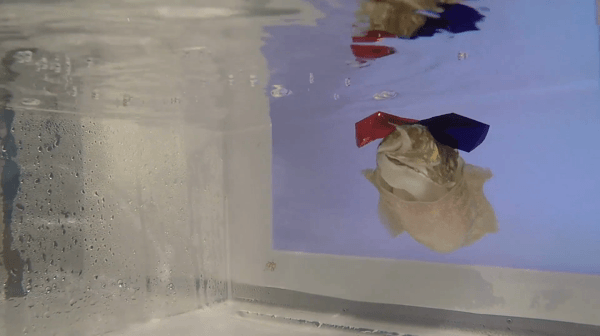Researchers Put Fancy 3D Glasses on Cuttlefish to See If They Use Depth of Vision When Hunting Prey

Dr. Trevor Wardill and a team of researchers at the Wardill Lab at the University of Minnesota decided that they would test how cuttlefish utilize field of vision when hunting prey. They outfitted cuttlefish with 3D glasses. When external stimuli (remote prey) were provided through a video feed, the cuttlefish took a bit longer to position themselves before striking. They also missed the prey completely.
This proved to the researchers that cuttlefish use stereopsis (transmitting information between both eyes) while hunting prey. Wardill explained how the glasses diminished that capability.
Related Laughing Squid PostsSneaky Pharaoh Cuttlefish Pretend to Be a Hermit Crabs in Order to Catch PreyWhy Cuttlefish Eyes Are Shaped Like a Rounded WHow Cuttlefish Use What They See to Activate Camouflaging Pigment Cells to Hide in Plain SightHow the cuttlefish reacted to the disparities clearly establishes that cuttlefish use stereopsis when hunting"When only one eye could see the shrimp, meaning stereopsis was not possible, the animals took longer to position themselves correctly. When both eyes could see the shrimp, meaning they utilized stereopsis, it allowed cuttlefish to make faster decisions when attacking. This can make all the difference in catching a meal.
Follow Laughing Squid on Facebook, Twitter, Flipboard and Subscribe by Email.
The post Researchers Put Fancy 3D Glasses on Cuttlefish to See If They Use Depth of Vision When Hunting Prey first appeared on Laughing Squid.
